The Business of Fashion
Agenda-setting intelligence, analysis and advice for the global fashion community.

News & Analysis
- Professional Exclusives
- The News in Brief
- Sustainability
- Direct-to-Consumer
- Global Markets
- Fashion Week
- Workplace & Talent
- Entrepreneurship
- Financial Markets
- Newsletters
- Case Studies
- Masterclasses
- Special Editions
- The State of Fashion
- Read Careers Advice
- BoF Professional
- BoF Careers
- BoF Insights
- Our Journalism
- Work With Us
- Read daily fashion news
- Download special reports
- Sign up for essential email briefings
- Follow topics of interest
- Receive event invitations
- Create job alerts
The Anatomy of Travel Retail
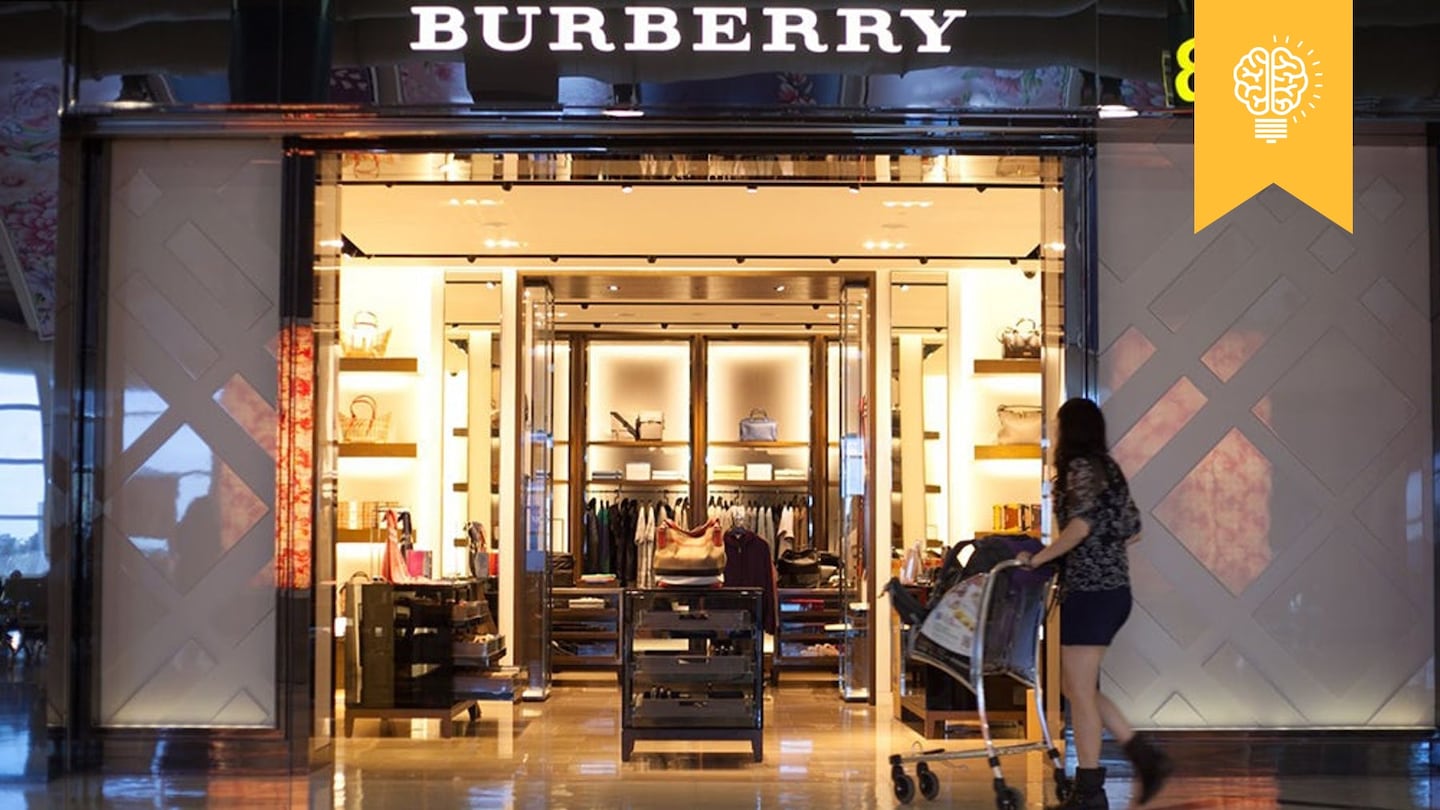
LONDON, United Kingdom — Travel retail typically plays second fiddle in brand communications, which emphasise flagship mono-brand stores. But, people travelling account for 40 percent of global spending on personal luxury goods, with 12 to 13 percent captured by the specialised and globally dispersed travel retail channel.
Airport malls account for almost 60 percent of the travel retail market, but the travel retail channel also includes ferries and cruises, border shops and downtown duty and tax-free shops.
These channels each have their own characteristics. Airport operators typically charge rent as a percentage of sales, which limits the potential upside for retailers as it reduces their operating leverage. Additionally, airport locations normally come with guaranteed minima attached. These can be expressed as absolute dollar amounts, in which case the retailer bears a traffic, consumer mix and execution risk. More frequently however, the dollar amounts are linked to traffic volume, in which case the retailer carries the consumer mix and execution risk only.
By contrast, the economics of downtown travel retail are similar to those of traditional luxury retail operations under fixed rental cost agreements. These stores typically have higher potential for operating leverage. Downtown and border shops compete directly with tax refund and display the same fundamental dynamics; fast growth with the continuing rise in traveller numbers, susceptibility to travel disruption and dependence on key brands. However, downtown tax free stores follow the business logic and constraints of the traditional high street, where tax refunds are available.
ADVERTISEMENT
Tax and duty free stores have a clear price advantage over the domestic market. They also face limited direct competition from other retailers, especially on core categories — airports with two or more operators for a single category are a minority. However, space growth is constrained by the need to win and retain concessions.
Diverse approaches to a complex channel
LVMH is the only luxury goods player with significant direct operations in travel retail, through its selective retail division. The division, comprising of duty free operator DFS and beauty products chain Sephora, booked sales of €9.5 billion (about $10.38 billion) and operating earnings of €882 million (almost $964 million) in 2014. Of this, DFS contributed an estimated 42 percent of sales and 38 percent of profits.
Salvatore Ferragamo is by far the most exposed brand to travel retail, with 138 duty free locations, more than twice as many as the number two, Hermès. It also operates nearly 27 percent of travel retail mono-brand points-of-sale (POS). Hermès and Bulgari follow with 60 and 51 travel retail locations respectively, each with about 19 percent of travel retail mono-brand POS. The list continues with Gucci , Swatch and Cartier.
The brand order is very different in terms of travel retail POS as a percentage of total POS: Shanghai Tang (30 percent), Givenchy (16 percent), Chloé (14 percent), Bottega Veneta (10 percent). But the picture could change as more and more travel retail POS are opened. In the past two years, Swatch has opened 26, Hermès and Givenchy have opened 13, Chloé 11, Bottega Veneta 10, Bulgari 10 and Cartier nine.
Hermès is the most exposed of the high-end brands, by a big margin, with 49 airport locations (Bottega Veneta 19, Chanel seven, Dior three).
Among the mega-brands, Louis Vuitton has the lowest exposure to travel retail, with only two airport locations (Gucci 31, Burberry 22, Prada nine). However, the brand operates 15 downtown locations, piggybacking on DFS Galleria (Gucci 15, Prada 15). This could give Louis Vuitton better marginal headroom for space growth, should it decide to expand more meaningfully into accessible categories — fashion jewellery, eyewear, fragrances and cosmetics, and silk scarves.
Will travel, will spend
The overall market is growing fast, by an aggregate 8.4 percent a year in the past 10 years. This is several percentage points faster than the broader personal luxury goods market and nearly three times as fast as GDP. If we include spirits, cigarettes and electronics, the travel retail market has doubled in value during the period, to about $63 billion.
Asia-Pacific is the largest and fastest growing region for travel retail ($24 billion, 13.8 percent compound growth between 2004 and 2014), with sales largely through airports, and downtown and border shops. Seven of the top eight downtown duty free locations are in Asia. Europe is the second-biggest region ($21 billion), but has the lowest growth (4.4 percent in 2004–14) and is focused on airports ($14.2 billion). The Americas region is worth about $11.5 ($6.3 billion in border shops, $4.6 billion in airports) and is growing by 7.1 percent a year. The Middle Easter and Africa market is about $6.7 billion, focused mainly on airports ($5 billion), with a compound annual growth rate of 12.4 percent for 2004–14.
As may be expected, the biggest country is Greater China (Mainland, Hong Kong, Macau, plus Taiwan), at about $10 billion, followed by South Korea ($8 billion). The third market is USA ($3.8 billion) followed by big western European countries (UK $3.7 billion, Germany $2.9 billion), the UAE ($2.7 billion) and Turkey ($2.2 billion).
However, the travel retail market is by nature sensitive both to foreign exchange rates and to exogenous shocks; terrorism, health scares, financial crises and so on. For example, the weakness of the yen and the euro have encouraged a sharp increase in spend in Japan and the Eurozone, primarily by Chinese consumers — and by Chinese professionals arbitraging price differences by buying in Europe to sell then in China through specialist websites. By the same token, Japanese consumers have withdrawn from international markets. Meanwhile, the stronger United States dollar is feeding hopes of a revival in international American spend worldwide. Currency fluctuations have also been partly responsible for a nominal slowdown in market growth in the last three years.
Conversely, regional diversity helps cushion the impact of external shocks. The buoyancy of Asian and Chinese demand has been further support. By the end of 2010, the travel retail market had fully recovered from the 2009 financial crisis and even exceeded the 2008 level — a strong performance in Asia-Pacific and the Middle East more than offset a slower recovery in Europe and Latin America.
The regional figures also underline the growing importance of emerging-market travellers. They are expected to be one of the main forces behind the forecasted doubling of air traffic in the next 15 years, including sharp increases in domestic air traffic in developing Asia and Latin America. This offers a potentially rich target for travel retail.
The result is a positive double-whammy outlook for travel retail, as emerging market nationalities are also the biggest spenders per passenger. Travel retail should therefore continue to grow faster than the personal luxury goods market.
Luca Solca is the head of luxury goods at BNP Exane Paribas.
- Luca's Letter
- Salvatore Ferragamo
- Bottega Veneta
- London, United Kingdom
- Travel Retail
© 2024 The Business of Fashion. All rights reserved. For more information read our Terms & Conditions
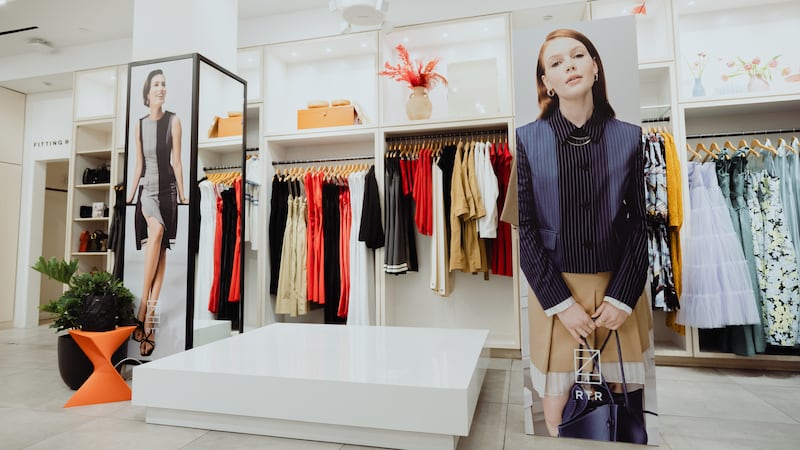
How Rent the Runway Came Back From the Brink
The rental platform saw its stock soar last week after predicting it would hit a key profitability metric this year. A new marketing push and more robust inventory are the key to unlocking elusive growth, CEO Jenn Hyman tells BoF.
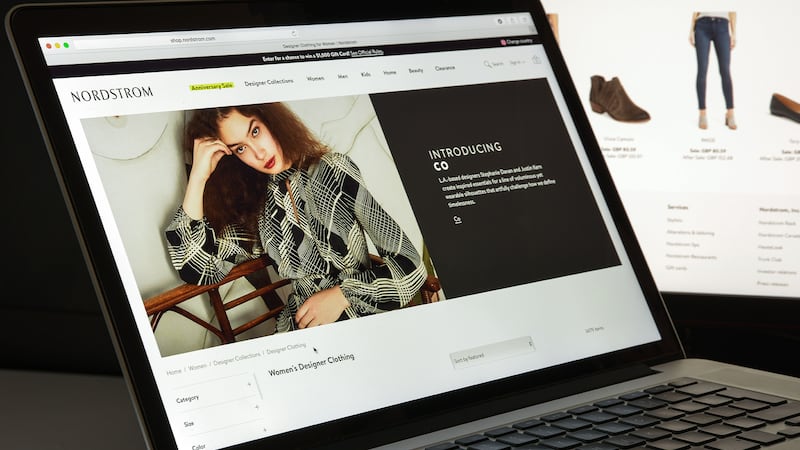
For Struggling Public Companies, Going Private Is No Panacea
Nordstrom, Tod’s and L’Occitane are all pushing for privatisation. Ultimately, their fate will not be determined by whether they are under the scrutiny of public investors.
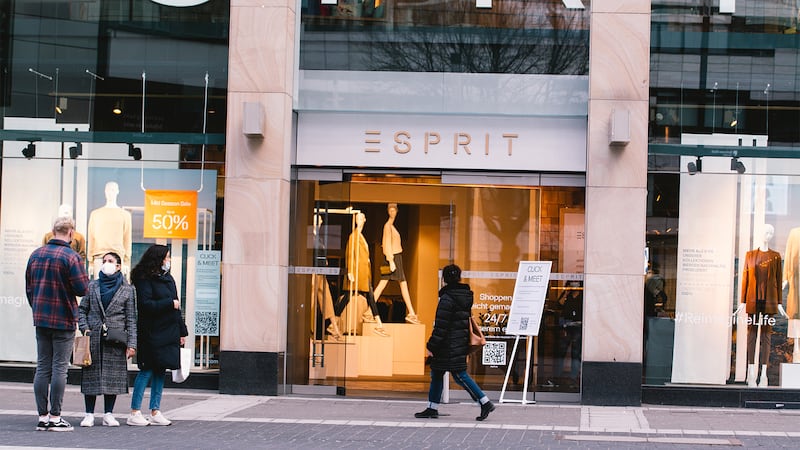
Why Esprit’s Ambitious Rebrand Fell Short
The company is in talks with potential investors after filing for insolvency in Europe and closing its US stores. Insiders say efforts to restore the brand to its 1980s heyday clashed with its owners’ desire to quickly juice sales in order to attract a buyer.
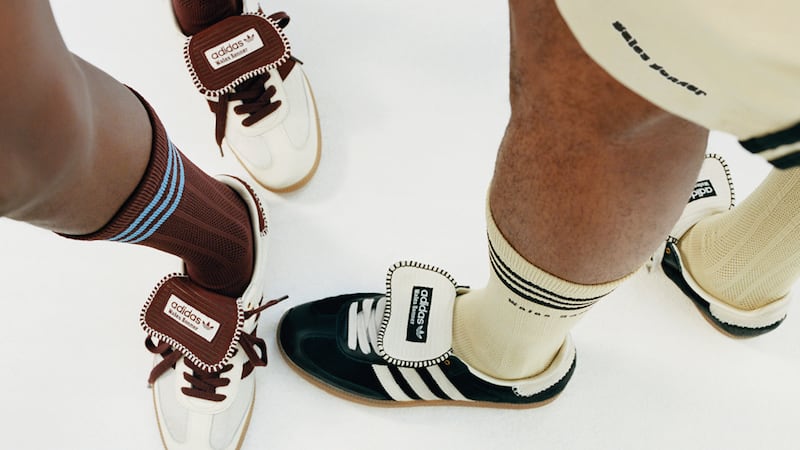
How Adidas Sambas Took Over the World
The humble trainer, once the reserve of football fans, Britpop kids and the odd skateboarder, has become as ubiquitous as battered Converse All Stars in the 00s indie sleaze years.
Subscribe to the BoF Daily Digest
The essential daily round-up of fashion news, analysis, and breaking news alerts.
Our newsletters may include 3rd-party advertising, by subscribing you agree to the Terms and Conditions & Privacy Policy .
Our Products
- BoF Insights Opens in new window

Hermès – The Strategy Insights Behind The Iconic Luxury Brand
Hermès International, sometimes also referred to as Hermès of Paris or Hermes, is a French luxury goods manufacturer. It has been consistently ranked as the world’s most valuable luxury brand in different valuation and ranking studies published by leading consultancies. Hermès as a brand enjoys an iconic status in the world of luxury. A combination of rich heritage, exquisite craftsmanship, eye for detail and high levels of quality and professionalism through the entire manufacturing process gives Hermès a position of superiority in the very competitive and ruthless world of luxury.
According to global brand valuation firm Interbrand, Hermès came in 28th amongst the Best Global Brands 2020. With a brand valuation of USD 18.0 billion, it trails behind Louis Vuitton, ranked 17th with a valuation of USD 31.7 billion.
Hermès is not a conglomerate in the real sense of the word and does not own a portfolio of brands like its key competitors, which include LVMH, Richemont and Kering . Currently, the range of products under the Hermès brand name includes leather goods, lifestyle accessories, furniture, fragrances, watches, jewelry, ready-to-wear and saddlery.
The leather goods and saddlery category is the biggest contributor to the company’s revenues (50%), followed by ready-to-wear and accessories (23%), and silk and textiles (9%).
Background of Hermès
Thierry Hermès founded the company in 1837 as a harness workshop in Paris. Originally, his intent was to serve the needs of European noblemen by providing saddles, bridles and other leather riding gear. In the early 20th century, Thierry’s son Charles-Émile Hermès moved the company’s shop to 24 Rue Du Faubourg Saint-Honore in Paris, where it remains to this very day and is the company’s global headquarters.
Gradually, the company’s product offerings expanded through generations. Between 1880 and 1900, it started selling saddlery and introduced its product in retail stores. In 1900, the company started selling the “Haut à Courroies” bag, which was meant for riders to carry their saddles in it. In 1918, Hermès introduced the first leather golf jacket with zipper, made for the then Prince of Wales. In the 1920s, accessories and clothing were introduced into the portfolio. In 1922, the first leather handbags entered the product line. The brand’s travel bags introduced in 1925 were a global success. In the 1930s, Hermès introduced products that have now entered the annals of fashion as icons – the leather Sac à dépêches (renamed as the “Kelly bag” after Grace Kelly) in 1935 and the Hermès carrés (scarves) in 1937. In 1949, the first Hermès silk tie and the first perfume ‘Eau d’ Hermès’ were introduced.
In the 1930s, the company entered the United States with an initial tie-up with the Neiman Marcus department store in New York.
The company’s iconic duc-carriage-with-horse logo and signature orange boxes were introduced in the 1950s. In the 1970s, the company established a watch subsidiary La Montre Hermès in Bienne, Switzerland. The company acquired tableware manufacturers like Puiforcat, Saint Louis and Perigord in the 1980s and consolidated its position in these segments of the luxury market.
The eye of the ultra-premium luxury segment, the “Birkin bag” was introduced in 1984, after a chance conversation between the then CEO Jean-Louis Dumas and actress and singer Jane Birkin on a flight from Paris to London, who articulated to Dumas that she needed a medium-sized bag. Each Birkin costs between USD 12,000 to USD 300,000 and is the exquisite handiwork of a single craftsman, who takes between 18 to 25 hours to complete the job via hand, more if the hide is a delicate crocodile skin. In 2014, an extremely rare Himalayan Nilo crocodile Birkin bag sold for USD 185,000, becoming the second most expensive bag to be sold at auction. Hermès is infamously known to burn imperfect Birkins, showcasing its dedication to the finest quality.
In 1993, the company went public on the Paris Bourse, which for various reasons was considered a strategic move with its own set of weaknesses. Throughout the late 1990s, Hermès extensively followed a strategy of reducing franchise stores, by buying them up, closing quite a significant many and by opening more company-operated stores. As of 2019, Hermès operates 311 stores globally, out of which 223 were directly owned and operated by the company.
In 1976, Hermès entered into an arrangement with British luxury shoemaker John Lobb, wherein it was allowed to use its name in return for extending the distribution reach of the brand. In 1999, in one of its first non-brand moves, Hermès bought a 35 percent stake in the Jean-Paul Gaultier fashion house.
Over a period of time, the company has extended its reputation by entering into strategic collaborations with specific players and also its suppliers in the ultra-luxury segment. These include:
- Setting up a joint venture with Faubourg Italia, in which Hermès holds a 60 percent share, to extend reach into the premium home furnishings segment (upholstery fabrics and wallpapers)
- Holding a 30 percent share in J3L, an old French supplier of metal parts to the company
- Holding a 39.5 percent stake in Perrin & Fils, which is a specialist textile weaver in a variety of categories, which include lingerie, furnishing fabrics, ready-to-wear and accessories
- Holding a 25 percent stake in Vaucher, which is a manufacturer and supplier of movement parts for high-end precision watches
- Acquiring a 40 percent stake in Bettina, a long-standing partner of the company who specializes in production of twillaine
Today, the brand operates 311 stores globally across the U.S., Russia and Asia and has over 15,000 employees. It is one of the largest and most admired luxury makers in the world with revenues of over USD 8.3 billion and profits of over USD 1.8 billion as at 2019. The stellar performance of the brand throughout its 183-year history is largely credited to its drive for strategic consistency, combining excellent creativity with craftsmanship as well as an unrelenting focus on the long-term against short-term benefits.
Hermes’ brand philosophy
The Hermès’ brand philosophy can possibly be summarised by a single sentence quote from former CEO Jean-Louis Dumas – “We don’t have a policy of image, we have a policy of product”.
The brand philosophy is deeply entrenched in the platforms of “quality” and “refinement”. It is for these very principles that the brand has always shunned mass production, manufacturing lines and outsourcing. According to Hermès, each and every product coming out under the brand’s name should reflect the hard work put into it by the artisan. Till today, Creative Director Pierre-Alexis Dumas signs off on every single Hermès product before it leaves the workshop, showing the company’s unwavering commitment to the highest quality. According to current CEO Axel Dumas, the main strength of the Hermès brand is the love for craftsmanship. This is further eschewed by Pierre-Alexis Dumas, who was quoted saying “I think Hermès objects are desirable because they reconnect people to their humanity… Our customer feels the presence of the person who crafted the object, while at the same time the object brings him back to his own sensitivity, because it gives him pleasure through his senses”.
The most critical aspect is that these principles around the brand have remained firm in the company’s evolution in its close to 183-year-old history. The ownership, management and leadership of the company have passed through multiple generations of the Hermès family, but the principles of the Hermès brand have never been diluted. All Hermès products are made almost entirely in France in workshops (Ateliers Hermès), which places a strong emphasis on quality. Also, Hermès’ claims, in line with the comments from its CEO and Creative Director, that each product is entirely manufactured by hand by only one craftsman, signifies the quality of craftsmanship and uniqueness of its products. For example, its silk scarves are only made from silk produced by Hermès farms in Brazil.
The driving force behind the platforms of quality and uniqueness is the intense desire of Hermès as a company to remain exclusive. The aura of exclusivity is important for the company because it does not intend to portray the brand and its products as mass-market luxury or even premium luxury. The philosophy and aim has always been to remain “ultra-premium luxury”, which can only be afforded by the very few and is not easily available.
In line with these brand philosophies, the company does not have a marketing department. The two core drivers of the company’s business engine are intuition and creativity. It is claimed that everyone in Hermès is responsible for marketing.
Hermes’ brand strategy
According to the company’s annual report, Hermès products are split into the following categories – leather goods and saddlery, men’s and women’s ready-to-wear and accessories (including footwear, belts, gloves, hats, etc.), silks and textiles, fragrances, watches, and other products (including jewelry, furniture, home accessories and furnishing, tableware, and sporting accessories). The company’s brand strategy is consistent across each and every one of these product categories in which it has a presence.
The strategy that the company follows and adopts ensures the aura of exclusivity remains tightly woven around its products. The Hermès strategy, as illustrated by the examples below, revolves around its 6 values: Spirit of conquest, creativity, craftsmanship, quality, authenticity, and independence:
Spirit of Conquest (entrepreneurship): Store managers are responsible for their own store collections and are offered the freedom of purchase to meet specific needs of their customers. Twice a year, 1,000 store representatives from its global stores come to Paris for an event called “Podium”. Each flagship is instructed to pick at least one item from product categories beyond the common ones (handbags, scarves, ties, fragrances, watches), which is an attempt by the company to push every flagship store to showcase and sell complementary products. This adds to the allure of the Hermès brand as not all products are available in each store and the online store only offers a selection of the company’s products.
Creativity: Every year, designers are provided with a theme to create their products and designs on. The theme for 2019 was “in the pursuit of dreams”. In addition, collaborations with designers are a mainstay of the company’s creative pillar, especially in the home furnishings category. The objective is for both the designer and the company to benefit from each other’s creative collaborations and reputations.
Craftsmanship: There is a mandatory 2-year training for a craftsman before he or she can start working on putting together any leather product in the Hermès portfolio. This slows down production time but the company’s philosophy has always been to maintain scarcity and exclusivity. Hermès’ leather goods division hires only 200 craftsmen a year. This practice has been in place across the company’s six generations of craftsmen.
Quality: Hermès has introduced “patience” as a very strong principle and element in its strategy to achieve the highest quality in its production. Customers cannot expect to walk into a store and walk out with a Birkin bag. Instead, one has to place an order and wait for a few months before it is ready. Instead of rationing high demand by price like normal economic law dictates, Hermès rations by queue. It is often debated by economists that the queue for Hermès bags creates surplus demand which overflows into other Hermès “consolation” products like wallets and belts. In addition, all new employees and artisans are carefully selected and go through a three-day in-house training session called “Inside the Orange Box” that traces the company’s origins back to its founders and the history of development of each of its product categories. The objective of this training is to make every Hermès employee feel close, involved in, and identify with the company’s culture, philosophy and values, hence demonstrating the company’s dedication to the quality of its brand and legacy.
Authenticity: Hermès does not look at celebrity endorsements as a brand-building tactic and has actively stayed away from this form of marketing (a practice that is quite common in the LVMH brand stables). The very fact that only A-list celebrities and the ultra-wealthy can afford and get access to their most premium and exclusive products is an authentic endorsement of the brand. Hermès also does not follow strategies of launching region-specific collections or product offers, allowing the same product collections to be sold everywhere in the world. Additionally, Hermès has always been a significant proponent and user of the “limited edition” strategy and also limits distribution of its products in its stores, demonstrating its commitment to showcasing only the most authentic products. Hermès products are also never offered on discounts.
Independence: Hermès has always asserted its independence in its shareholding structure and family ownership. By doing so, it is able to retain most of its production within France and serve its long-term vision.
Former CEO Patrick Thomas, only the second individual outside the Hermès family to have run the company, once commented, “The luxury industry is built on a paradox: the more desirable the brand becomes, the more it sells but the more it sells, the less desirable it becomes”. His comment entirely encapsulates the strategy of exclusivity and scarcity that Hermès follows for its brand.
Hermès also follows a continued tradition of innovation in the ultra-luxury segment. From its early years of inception to the most recent times, the company manufactures and launches exclusive products that increases the allure of the brand and strengthens its position as an object of significant desire among its ultra-rich customer base. During the 1970s, new materials like polyester and plastic started to be in fashion, which prompted Hermès to develop new items in a bid to win over consumers. In 1979, a French advertising campaign featured a young lady with a Hermès scarf, which sparked huge global interest in the company’s scarves that lasts till today. By the 1990s, Hermès was offering over 30,000 products.
In 2014, the company’s new launches across different product categories included the Oxer bag, the Nautilus pen, the Faubourg watch, the Third Haute Bijouterie collection, the La Parfum de la Maison, the H-Deco tea and dessert service and the Lighting collection. In 2015, continuing with its tradition of offering something new and expanding the definition of luxury, Hermès collaborated with Apple in a new collection called Apple Watch Hermès. The new collection has been categorised as a true collaborative effort with each watch engraved with the Hermès signature, typeface customizable to the famous Hermès orange and its three exclusive dials paying respect to Hermès’ watch face designs. It also launched a new menswear website called Le MANifeste d’Hermès, which aims to act as a guide for men’s styling needs. This website has been termed by GQ magazine as having the ability to revolutionize e-commerce.
In 2016, Hermès launched its first Hermès Innovation Lab in Leeds, Yorkshire UK to implement emerging technologies including self-tracking parcels and intelligent delivery using location-based services. In 2020, it launched its second Innovation Lab in its New York store, fully constructed from sustainable materials and showcasing its efforts in sustainable design, including a wooden iteration of the iconic Kelly Bag.
Hermès regularly goes back to its roots when it needs to find inspiration for creating and launching new products. “Heritage” is one of the strongest differentiators of the core brand identity of Hermès. The following recent examples illustrate this process beautifully:
- The Ring bag created in 1958 inspired the new Icon belt, which was launched in 2014. Along similar lines, the Piano belt (launched in 2014) is a re-edition of the 1954 model but with a more retro look. This rich source of inspiration comes from the Hermès Conservatory of Creations, which is an internal museum that stores every model created by the company for each product collection
- Creations across product categories also regularly come together in new product offerings. In 2014, a piece of jewelry called the Mini-Dog buckle became a part of the Irving moccasin shoe
- Existing classics are also extended into new product lines. In 2014, two classic scarves (Ex-libris and Peuple du vent) were extended to cowgirl bandana sizes to emulate the great American West tradition
- In jewelry, the newly launched Sangles Hermès line seeks to honor the company’s legacy horse harness making traditions and jewelry know-how in chain making
This intense focus on innovation within the company has also resulted in Hermès discovering new avenues for brand growth and for widening the brand’s influence in the ultra-luxury segment. A very relevant example is the new project titled as “Petit H”. The word immediately brings out connotations of “mini” versions of Hermès products, but in reality it is something different altogether. Hermès Petit H is the company’s endeavor to encourage “luxurious recycling” of raw materials that are leftovers of building Hermès products. The project is now taken shape as a new product category within Hermès, also referred to as a new “atelier”. Leftovers of manufacturing process of other products are now being crafted into unique and ultra-luxurious products under the Hermès Petit H collection.
Products created via the Petit H initiative travel around the world and are put up for temporary sale in different stores. For example, in 2014, the Petit H collection was available for sale in one store in California and one in Taiwan.
In 2015, Hermès announced that it would focus on exploring and wandering, and reflect these experiences in its brand. It opened the Wanderland exhibition that ran in London, with the exhibition moving on to Paris, Turin and China. The theme of these exhibition is flânerie, which is defined as wandering the city streets and absorbing the details of everyday life. The Wanderland exhibitions have multiple floors with bizarre themed rooms that contain exhibits from the Hermès archive.
Hermès has a huge, expanding and profitable service category of working towards bespoke requests of ultra-rich individuals. The work under this category is done through the Hermès Horizons brand name. Essentially, the deliverables revolve around specific bespoke requests of creating an object from scratch, sheathing an object from an existing Hermès collection or entire fittings or upholstery work for cars, planes and yachts. This is a clever strategy of extending the visibility and influence of the brand and also entrenching it in the lifestyle of the rich and famous.
Another very strong and distinctive element of Hermès brand strategy is the concept of collaboration. In the continuation of a strategy that was adopted by the first generation of the founding family, Hermès regularly invites artists (carefully selected by senior Hermès artistic directors) to design iconic products in the company’s portfolio. The collaborations that are done for the iconic scarf are under the brand name of Hermès Editeur, which in simple words stands for special editions of the Hermès scarf. Collaborations are not limited only to scarfs but also occur in other product categories and within portfolios.
The company’s collaborations with brands outside the Hermès brand portfolio are consistently in the ultra-luxury space – John Lobb shoes and boots, Puiforcat tableware and dinnerware and Saint Louis glassware. In 2010, Hermès partnered with Bugatti Veyron to create the Bugatti Veyron Fbg par Hermès sports car which was completely outfitted with leather by the skilled leather artisans of Hermès. At USD 2.1 million, it was one of the most expensive cars in the world. In 2011, it also partnered with Eurocopter to design a USD 8 million helicopter.
The overall structure and positioning of the product portfolio under the Hermès brand name is a classical umbrella branding strategy. Even though every one of the products in all the categories have distinctive names, the overall Hermès name forms the core of all marketing and communication strategies. The only product that can arguably stand on its own without the Hermès name endorsement is the eponymous Birkin bag. The key strategic element of Hermès brand strategy is to maintain the aura of exclusivity and scarcity.
Hermes’ family business strategy
As one of most prolific family businesses in the luxury sector, it is no easy feat for Hermès to have reined successful across 6 generations since 1837:
- First generation owner and founder Thierry Hermès built a strong reputation for the company as a high-quality saddlery maker using the functional and decorative “saddle stitch”
- Second generation owner: In the 1870s, Thierry passed on the business to his son Emile-Charles Hermès, who moved the business to the rue du Faubourg St. Honoré
- Third generation owner: In 1922, Emile-Charles sold his stake to his son, Emile-Maurice Hermès, who began to diversify into travel- and sport-related leather goods and launched ready-to-wear clothing, watches and gloves
- Fourth generation owner: In the 1930s, Emile-Maurice passed the family business on to his son-in-law, Robert Dumas, who produced the first Hermès scarf
- Fifth generation owner: In 1978, the company was succeeded by Robert Dumas’ fourth son Jean-Louis Dumas after his death. With experience working as a buyer for competitors, Jean-Louis Dumas transformed the business into an international luxury retailer, making the company public in 1993 and turning annual revenues from USD 82 million to USD 2 billion
- Sixth generation owner: In 2010, Jean-Louis Dumas handed over the reins to his son and current Creative Director Pierre-Alexis Dumas, after his death. Jean-Louis Dumas’ nephew, Axel Dumas was appointed as CEO in 2014.
The long-term success of family firms is not a given. Complexities arise when ownership, management and family roles overlap, which is a unique characteristic of family businesses. Some of the defining characteristics which have contributed to Hermès’ success across six generations include:
Strong family ownership: The Hermès’ family business is run on the principle of a democratic monarchy, which means that leadership and management is closely tied to the family body with board of directors composed mostly of family members across the 3 lines (Dumas, Puech, Guerrand). To keep ownership and influence within the family, a 75% majority is also required to change the company statutes or the CEO.
Strong values: The family believes that the family has obligations which are part of the family culture and ethic. Some of its values include respect for people and nature, and respect for new ideas, which spurs its culture of innovation.
Strong family pride: All family members who work in Hermès have a very strong identification and pride with the brand, with a remarkable dedication to quality and giving his or her best to preserve the family heritage. Additionally, all members of the next generation are immersed in the company from a young age through organized tours to subsidiaries and suppliers.
Strong financial structure: For Hermès, going public increased the company’s’ financial stability while still enabling a strong family influence. In addition, it adheres to the principle of self-financing, resulting in a 15% profit reinvestment back into the company annually.
Hermès brand communication
Brand communication and marketing strategies of Hermès always remain consistent with the principles of “heritage” and “exclusivity” of the company. Marketing campaigns celebrate the Hermès lifestyle and do not aim to directly sell products from the various ateliers. The company also sponsors events that have a direct fit with the image and the legacy of the company. In addition to these, Hermès uses strategic collaborations with independent artists and designers to raise visibility of its products. The primary aim of collaborations is to strengthen the aura of exclusivity around specific product portfolios. This is done through the classic “limited edition” strategy, but in the case of Hermès, it puts a higher degree of exclusivity to the portfolio, because Hermès products in themselves are exclusive.
In sync with the company’s heritage and association with horses (and the fact that the company was founded as a saddlery manufacturer), Hermès sponsors lots of horse racing events around the world. In the beginning of 2014, it became the official sponsor of the US Show Jumping Team. The company’s flagship event in the equestrian world is the annual Saut Hermès show-jumping competition held in Paris. Hermès has been organizing and managing this event on its own since 2010 and uses it as an avenue to showcase its fine leather products and its longstanding association with horses. It is also a visibility-generating avenue for Hermès among the very affluent audience of such events.
In terms of marketing and communication, Hermès is considered to be a very innovative organization. In Forbes 2014 List of 100 Most Innovative Companies, Hermès came in at number 13. In the Forbes 2020 List, it dropped to number 29, but was the only luxury brand in the Top 30. It has been using content marketing and social media platforms in a highly engaging manner in all its marketing and communication campaigns.
A very recent example is the online pop-up virtual store dedicated to the brand’s silk squares, shawls, twills, scarves and stoles. Created in partnership with AKQA, lamaisondescarres.com resembles a grand house with intricate interiors, diverse characters and creatures. The website allows visitors to explore different rooms of the virtual house, which contains more than 600 models of Hermès signature silks, all of which can be clicked and purchased.
Hermès has shown ingenuity in leveraging the power of social media. There are two apps it has developed – one is called Silk Knots, which essentially is a how-to-guide that teaches how to tie the brand’s scarves in 24 different ways. The second one is called Parcel Manager, which provides online shoppers with increased visibility over their shipments, and more choice and control over how they receive their parcels.
It invests significantly on TV, print, online video and online visuals to promote different collections at different times of the year. It also invests selectively in mobile advertising to target affluent readers of different publications that carries its print ads. It is also known to use humour and comical situations in its advertising, which are clever ways of showcasing its products. In 2014, it released an online video ad campaign that used comical handshakes to showcase its 2014 gloves collection. Previously, it marketed its racetrack inspired porcelain tableware line Rallye 24 by integrating the line into an online game.
The legendary “Hermès windows” have always been a very strong visual and larger-than-life platform for showcasing the brand’s exquisite styling and craftsmanship heritage. The windows pop up at periodic intervals at different Hermès stores globally. The windows are considered to be the company’s homage to its craftsmen. According to Pierre-Alexis Dumas, the Hermès windows are like a portal into the culture of the company. Dumas is proud to have Leïla Menchari, the brand’s longstanding window designer from 1978 – 2013 design window art for the brand. During these 35 years, 136 elaborate fantasies were created with products designed specifically for the windows, of which nothing in the window was for sale. The windows are also considered to be the original progenitors of the art of communication developed within the company, a “small theatre where each role must be played well”.
Hermes’ Challenges
Continuous takeover interest from LVMH: The biggest challenge that Hermès has faced to its independent existence is the continued interest of rival luxury fashion house LVMH in its fortunes. LVMH quietly built up a stake of 17 percent in Hermès between 2002 and 2010. This led to a highly acrimonious and long legal dispute between the conglomerate and Hermès. As a result, LVMH had to pay a fine of USD 11 million and sell down its 23% stake to 8.5% for flouting public disclosure requirements. By 2017, LVMH had sold most of its shares in Hermès in order to take complete ownership of luxury brand Christian Dior. As a company, Hermès has fiercely protected the company’s integrity and independence from this continual threat from LVMH, as seen from its setting up of a private holding company which has the first right of refusal when a family member decides to sell shares – ending any possibility of a takeover from LVMH.
In 2011, more than 50 descendants of Thierry Hermès pooled their shares into a co-operative called H51, which was valued at USD 16 billion. These descendants, who in total held 50.2 percent of company’s shares, contractually agreed not to sell any shares for the next two decades. Additionally, two fifth generation family members, Bertrand Puech and Nicolas Puech, kept their shares outside the co-operative but also held out against LVMH, by granting other family members the right of first refusal if they ever decided to sell their shares. This collaborative, cohesive and united stand taken by the family members signify the importance they place on Hermès remaining and operating independently (the Hermès share value rose by 30 percent during the time LVMH was quietly accumulating shares).
Succeeding in China: Like any other luxury player, Hermès takes the opportunity that China presents very seriously. But, unlike others, it has adopted a very patient approach towards targeting the luxury market in China. Although it entered China in 1997 and quickly grew its network to 28 stores covering 19 Chinese cities, the company has taken a carefully considered decision of not opening more than one store per year from 2015.
Hermès strategy for China is innovative but also risky. It plans to use its new stores to put forward the whole Hermès brand experience in front of the Chinese consumer. The latest flagship store that opened in Shanghai in 2014 (Hermès maison) is designed like a house, has craftsmen situated on different floors actually creating products and has a museum like feel to showcase the brand’s rich legacy. In addition to retail level experiences, the company is trying to forge a link with China’s rich tradition of craftsmanship to increase the brand’s appeal in the country. The adopted strategy is built on the principles of patience that is required for craftsmen to manufacture exquisite products, and is diametrically opposite to the fast-paced, quick gratification and shopping mall driven culture that exists in Asia.
The strategy is risky from the point of view of accessibility and exposure to the products and brands from rival fashion conglomerates (LVMH, Kering and Richemont). Also, the Chinese luxury consumer is extremely well travelled and is regularly exposed to global luxury trends. In that sense, they are used to and are one step ahead of luxury offerings in their country. To instill a sense of patience and appreciation for the aura of exclusivity and scarcity can be a challenging task for Hermès.
But, the company has also adopted an interesting parallel strategy to expand its thinking and philosophy behind luxury manufacturing and marketing in China. In 2012, it put its brand and marketing muscle behind the launch of Shang Xia , its Chinese luxury brand. Jiang Qiong’er, Shang Xia’s founder, strongly believes in the tradition of Chinese craftsmanship. This was the key connection between her and the then Hermès CEO Patrick Thomas, which eventually led to the collaboration and the launch in China. But Hermès has been careful in not allowing the Shang Xia brand to dilute its own brand identity in China. Current CEO Axel Dumas has been quoted as describing Shang Xia as a “small baby”. Even for Shang Xia, Hermès has adopted a longer watching strategy, with the brand expected to generate profits only in 2016.
Another advantage that Hermès has in China is the subdued, underplayed and highly exclusive positioning of its brand and the products. This matches seamlessly with the current government-led crackdown on ostentatious display of wealth, bling and logos. The Hermès brand, due to its tradition and strategy of carefully controlling distribution, no overt displays of any logos and the complete absence of any form of celebrity endorsement, is well placed to appeal to the changing definitions and perceptions of luxury among the Chinese consumer.
But again, preferences and needs for luxury can quickly shift among Chinese consumers. Hermès strategy of introducing “patience” as an element in the acquisition of its products, can either work for or against the company’s fortunes in one of the world’s biggest luxury markets.
Strengthening the Hermès brand equity beyond leather and silk: Hermès as a brand is known for its heritage, craftsmanship and exclusivity in the domain of ultra-luxury leather and silk products. Although the Hermès brand exists and offers products beyond leather and silk, the brand equity in some of these other product categories is not that strong.
A relevant example would be of the watchmaking division – La Montre Hermès, with a 90-year brand history. According to the watchmaking divisions’ newly appointed CEO Guillaume de Seynes, the division is a small métier with great potential. In his own words, there are two potential definitions of the watchmaking division’s success – “qualitative growth we can be proud of and in which we are both Hermès and watchmaker” and “the day when clients unhesitatingly compare Hermès with big established watchmaking brands, we will have succeeded”. The fact that it is going to be a slow journey for the watchmaking division to establish itself is reflected in its sales history up to date. In 2019, the division contributed just 3 percent of the brand’s total revenue.
The same can be said about some of the other product categories in which Hermès has a presence. Although categories like perfumes and jewelry are growing in terms of sales and revenue contribution to the overall Hermès portfolio, they are yet to reach the levels of the leather and saddlery products division success. Diversification is an important strategy for a luxury house to hedge against cyclical downturns in specific categories, fluctuating consumer demand, wider economic, social and political factors and shifting consumer needs and preferences. The challenge for Hermès in adopting and implementing a diversification strategy is the inherent nature of its exclusivity-marketing model.
In addition, it has been 36 years since Hermès had launched the iconic Birkin bag. It is a question of whether the brand can launch yet another similar iconic bag, in order to preserve exclusivity and mystique over the Birkin and to sustain brand ardour amongst its fans.
From a luxury house’s perspective, decline in demand for specific product categories should be mitigated by upturns in other product categories. Limiting distribution and adopting a model of scarcity can work against this. In the case of Hermès, this is especially true for categories like accessories, watchmaking and men’s and women’s wear. Hermès need to be selective about the marketing model it adopts across different product categories.
Conclusion: The Hermès brand is and will continue to be ultra-luxury
Hermès is an ultra-luxury success story, without any doubt. With limited distribution, exclusivity and controlled marketing, the overall company and many of its product categories have regularly registered double-digit growth rates year-on-year. This is a true reflection of the Hermès brand strength among the highly affluent segments of the global population. The company has successfully kept alive and strengthened a brand differentiated through strong history, exquisite craftsmanship and superior quality. The fact that it is considered to be the most innovative among all the luxury fashion houses is a testament to the company’s commitment to constantly manufacture and launch ultra-luxury products that are unique, have a strong sense of allure and have a distinct mark of superior craftsmanship.
The company’s future looks secure in the hands of a committed and disciplined group of family scions, but it needs to constantly evolve and differentiate to maintain its superior position in the ultra-luxury segment of the market through leveraging the power of its family brand as an icon of legacy, authenticity and prestige.
Follow Martin Roll on LinkedIn >>
Insights link
About the author: Martin Roll – Business & Brand Strategist
Read more: Insights & articles
Read about Kering: Kering – Evolution of a Global Luxury Brand Company
Read about Shang Xia: Shang Xia – Chinese Luxury Fashion Brand With A French Soul
Read about luxury brands: Next Frontier For Luxury Brands
Sign up for updates on Business, Brands & Leadership
Related Articles
- Strategy And Succession in Family Business - Charting The Future
- Banyan Tree - Branded Paradise From Asia
- The Secret of Zara’s Success: A Culture of Customer Co-creation
- How Nations And Brands Overcome Country of Origin Challenges
- Brand Naming Toolkit - Techniques And Insights
NEW Book Release
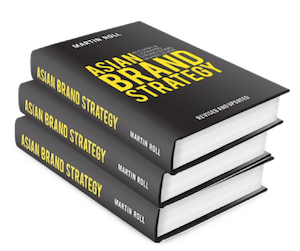
Asian Brand Strategy provides key insights and knowledge about the rising Asian brands incl. model frameworks, brand cases and checklists on Asian branding. Download sample chapter .
DRIVE IMPACT
Martin Roll enables global clients to deliver business impact and drive long-term value. Learn more about our services and how your company can get ahead
LATEST INSIGHTS
What is the purpose and value of a family office a global overview, fit for generations: the essentials of successful family business strategy, strategy and succession in family business – charting the future, banyan tree – branded paradise from asia.
How Hermès became the ultimate status symbol
Hermès, the Birkin bag maker, weathers economic uncertainty by sticking to core products
The Birkin bag. A square silk scarf printed with horse bridles. A cashmere throw blanket splashed with the letter H. For years, Hermès' iconic products have been coveted by those in the know.
Now, its shares are also hot commodities, with their performance outpacing bigger luxury brands like Louis Vuitton owner LVMH and Gucci-maker Kering.
Over the past year, Hermès' stock has climbed more than 30% despite a slowdown in luxury spending amid economic uncertainty and dwindling pandemic cash, while LVMH barely gained and Kering's shares fell. Hermès's secret, experts say, is that it hasn't tried to meet the masses . Instead, it's embraced scarcity and maintained its quality.
"For other luxury companies, it was not such a good year," Axel Dumas, the sixth-generation CEO of Hermès, said earlier this month during its annual earnings presentation. "There seems to be a polarization in our industry: Those who are very successful and those less so."
But as the nearly-200-year-old family-run company opens more stores, grows its team to include thousands more artisans, and expands into cheaper — and easier-to-obtain — products like makeup, can it maintain its sheen?
"The curse of retail is everyone chases more," Simeon Siegel, a senior retail analyst at BMO Capital Markets, told Business Insider about luxury brands. "At some point, that hurts the brand."
Hermès' success has been driven by scarcity
While many luxury brands have espoused social media marketing and celebrity partnerships, Hermès — which started as a saddlery and which still hand-stitches the lion's share of its leather bags and silk scarves — hasn't. Its core products haven't changed much in decades, it does not have TikTok , and doesn't give celebrities free handbags.
That scarcity-of-product approach helped Hermès hit an annual revenue of $14.5 billion last year and gain a market cap of over $250 billion. With more willing customers than available goods, it epitomizes luxury. (The brand is equally controlled in its approach to the press and did not respond to BI's requests for comments).
"It's one of the very few areas in retail that's not trying to sell an infinite amount of units," Siegel said about the luxury sector. "Creating another handbag would be easy, and selling it would be even easier, but realizing that would be the wrong decision for the brand is a very impressive discipline that the most successful luxury brands have internalized."
The famous Birkin bag epitomizes Hermès' approach
The Birkin is more than a trendy accessory . Since soon after it was introduced in 1984, the bag — which has a starting price of around $10,000 but can run into the six figures — has been among the most covetable purses of the ultrarich.
It's not something one can purchase at a department store, walk in off the street and buy at a boutique, or order online, and specific styles sometimes rack up yearslong waitlists. To buy directly from Hermès, customers must cultivate a history with the brand. While there's no steadfast rule, experts say wannabe Birkin owners must shop loyally at Hermès for years — and some say spend hundreds of thousands of dollars — before they get the opportunity to spend another five figures or more on the bag.
When it comes to its iconic scarves, each made-by-hand item is part of a numbered, limited edition, meaning baked-in exclusivity.
"It's literally economics 101," retail industry expert and consultant Hitha Herzog told BI. "When you have short supply and high, high demand and the branding that goes with it — that is what fuels it."
"People desire what they can't easily obtain," Nicole Pollard Bayme, the founder of luxury styling firm Lalaluxe, told BI over email. "Crafting a playbook for marketing to the luxury consumer, Hermès sets the standard."
Hermès' limited products only add to the appeal
The brand is also consistent in its dedication to core products. While unafraid of whimsical design, the Birkin and Kelly bags — two handbags that don't look all that different from Hermès' original saddle bags — and scarves remain dependable. Hermès' leather and silk products account for 41% and 7% of its revenue, respectively.
Other luxury houses, like Versace, owned by Capri Holdings, and Kering's Balenciaga, have been built more broadly around fashion and have taken a more mass-market approach, partnering with different brands and selling everything from socks to blue jeans. This leaves them vulnerable to the cyclical nature of fashion — which Hermès has resisted.
"Brand equity is much more diluted than Hermès'," Herzog said of brands like Gucci and Louis Vuitton. Hermès doesn't have a lot of "ancillary products," which is "very different than Gucci, which has shoes, socks, sweaters, perfume, makeup, a deal with North Face."
Hermès is 'fairly recession-proof'
Keeping it simple has helped Hermès hold its own as luxury brands start to lose their shine after a multiyear spending boom.
While brands like Gucci and Saint Laurent have more recently seen waning sales after a prior boost from "aspirational" luxury shoppers — younger, less affluent customers who flocked to these brands during the retail bubble of the past few years — Hermès's scarcity meant it was never for those shoppers to begin with. So, there aren't as many to lose at a time of recession worries.
"Being at the top of consumer desirability means Hermès will be the last brand consumers will give up. Hence its resilience," Bernstein analyst Luca Solca said.
Plus, while brands like Chanel and Louis Vuitton have been criticized for what consumers consider unfair price hikes, Hermès "had been very prudent increasing prices" from 2020 to 2022, Solca said. Between that and the company's attention to craftsmanship, the wealthy don't feel like they are being taken advantage of when inflation does cause price increases.
"It's fairly recession-proof because its key market audience that buys at the top end don't ride with the waves of recessions ," Winston Chesterfield, the founder of Barton, a London consulting firm focused on the wealthy, told BI.
From the US to China, Hermès is expanding
But Hermès is growing. Last year, it opened two factories in France: one in Louviers, which will focus on the Kelly bag, and one in the Ardennes region. It also announced it will expand the Saint Junien facility in New Aquitaine (also France) which makes Kelly and Birkin bags. Plus, it opened storefronts in Aspen, Colorado; Naples, Florida; and Nanjing, China, and has one coming to Princeton, New Jersey, later this year.
That's raised concerns among some who've seen what happens if brands expand too fast.
"They're taking a really big step now, and in some cases, people might think it's risky because they are growing really fast," Herzog said, pointing to the 2022 opening of a boutique in Williamsburg, Brooklyn — not usually seen as a luxury destination.
Hermès also added more SKUs. In the beauty category, for example, it added eye palettes, mascara, and new lip colors, which are available at accessible prices compared to its other products. It has also announced a plan for a skincare line, and touted its new Maximors and Arçon bags in its annual earnings report.
While all of the above helped the company achieve revenue growth of 21% last year, it raises questions about losing the discipline that has made the brand so successful.
Hermès' family leadership may keep a tight leash on growth
One major factor that points to no change: The company's sixth-generation leaders — cousins Axel and Pierre-Alexis Dumas — who have been emphatic about maintaining a commitment to quality and brand equity. In fact, they were pivotal in defending against a takeover by Bernard Arnault's LVMH — which would have made them very, very rich.
"The Dumas family basically have just behaved as you expect them to behave, which is they control the ship and they maintain standards," Barton's Chesterfield said. "They've never gone after volume."
Like every generation before them (they are the great-great-great grandsons of founder Thierry Hermès), the Dumas cousins apprenticed in Hermès' atelier, learning the brand's signature saddle stitch and how to craft its most covetable items as they are still made today — by hand. For decades the cousins have resisted outsourcing, manufacturing techniques, and inexpensive materials that would boost profits but cheapen the goods. Instead, they've invested in growing the number of craftsmen, adding hundreds each year, opening schools and training centers to teach the art of stitching and how to screen print.
It's unlikely their stance would change now. Even the language around expansions — the company says it's opening workshops, not factories — points to the fact that its bags, scarves, and gloves will still be made by hand by Hermès artisans. With its current team of more than 7,000 craftsmen, there's still a hard and fast limit on how many Birkins, Kellys, and more can be made.
"We're not going to see Birkins manufactured at the rate of Coach. That's never going to happen," consultant Herzog said. "There's an element of scarcity that they will always have."
And while it is expanding into more affordable categories, those aren't its bread and butter. Beauty, for example, only makes up 3.6% of its revenue. So you may be able to afford a Hermès lip gloss — as many customers have always been able to afford a key chain or coin purse — but that doesn't mean you're getting anywhere near a Birkin or a Kelly.
As Herzog put it: "Go into Hermès today and say, I'd like to see a Birkin. See what happens."
And unless you are part of a very select group, expect to be mortified.

Related stories
More from Retail
Most popular
- Main content

- Become a member
Bringing together a diverse community of French, local, and international enterprises as part of our strong business community. We put you in the right position to network, get insights and expand your business.
- Why join us?
- Become a member - 1 month off, all the benefits
- Our Patron Members
- Online directory
- Mentoring programme
- Members' privileges

More information

Choose the right package for your needs

Discover the companies at the core of the Chamber

Find and connect with other members

Make the most of exclusive deals and discounts
From newly arrived SMEs and entrepreneurs to established international firms, we offer a wide range of services to allow your business to prospect the market, set up and develop in Hong Kong efficiently and with ease.
- Visa services
- Prospect the market
- Set up and run your business
- Business Centre
- Recruit with us
- Engage in our trainings
- Promote your business

Take the hassle out of your next visa application by engaging our expert team.

Discover this international hub in the heart of Asia and on the doorstep of mainland China. Dynamic city with strong growth prospects and a regional base for expansion across Asia; Hong Kong is the perfect location for your business.

Benefit from dedicated approach in understanding your company’s specific needs. We listen to your project and devise the best company structure. We guide you through all the administrative and legal hurdles.

Settle in the heart of Central and enjoy unrivalled access to the Chamber’s services through our Business Centre.

Match your business with the right talent through our recruitment agency and its diverse database of profiles.

Through our network, we bring trainers from all areas of expertise to offer practical workshops to upskill you and your team.

Boost your company's visibility accoss our advertising channels. From sponsorship, organisation of corporate seminars to print and digital advertising options, position your brand to be seen in our community and beyond.
We put together a showcase of stellar events throughout the year as a platform for members and the wider business community to learn, connect and share.
- Upcoming events
- Signature events
- Our members' events
- Past events
- Sponsor an event

- Committees & Series
We provide a platform for our members to share their news and to deliver the latest business insight to our community.
- Advertise with us
- HongKongEcho Magazine
- Annual Report
- Government funding updates
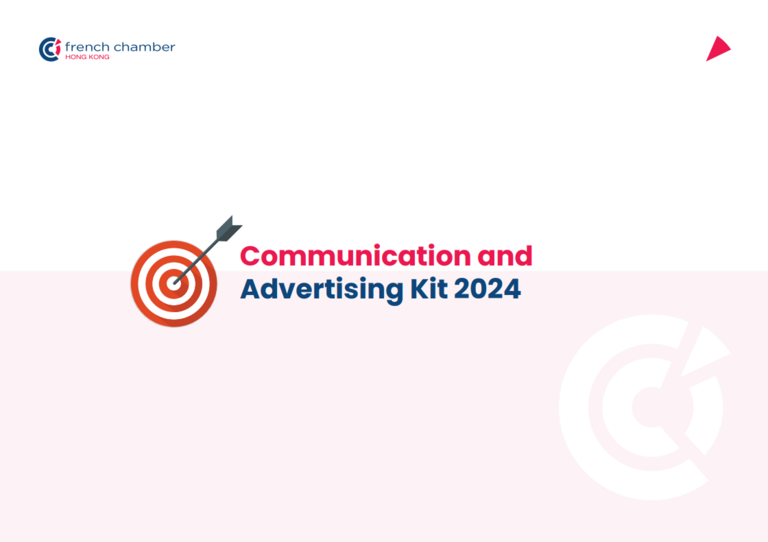
The HongKongEcho magazine, our ambassador, sent every quarter to the major business actors in HK and in France. Each edition focuses on a theme relevant to the French, local and international business communities in HK. 25,000 opportunities to share your qualitative insights every year.

Our dedicated members-only portal about the latest government funding schemes.
Matching your business with the right candidates, we scour the market for the best local and international staff from entry to senior levels.
- Intern and VIE support

As a recruitment agency with a strong track record helping organisations of all sizes, we’re here to accompany you throughout the hiring process.

Check out open positions in various companies around Hong Kong or send us your CV for us to help you find a job

Whether you’re seeking an intern or looking to hire a VIE to boost your Asia operations, we can help streamline the process.
We offer a wide range of services to take your business to the next level: Committees, Events, Corporate Services, Recruitment and Training, Business Consulting, Communication and Advertising, as well as a Business Centre in the heart of Central.
- Our governance
- Why Hong Kong?
- Your dedicated team
- French Chamber Foundation
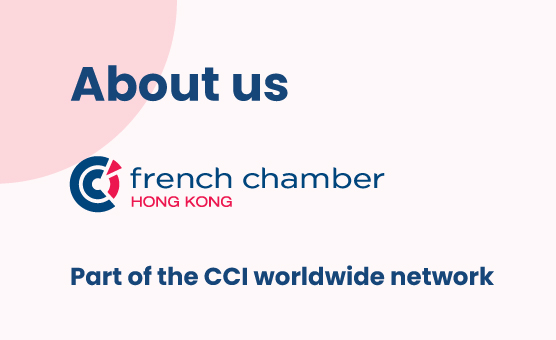
A dynamic Chamber with 30+ years of history, driving closer engagement between the French and local business communities.

The Chamber is governed by 40 Councillors, elected from within the Chamber's membership base by other members.

A vibrant business city on the doorstep of mainland China and in the heart of Asia.

A team of 20+ professionals working hard to put you in the best position to network, gain insight and expand your business.
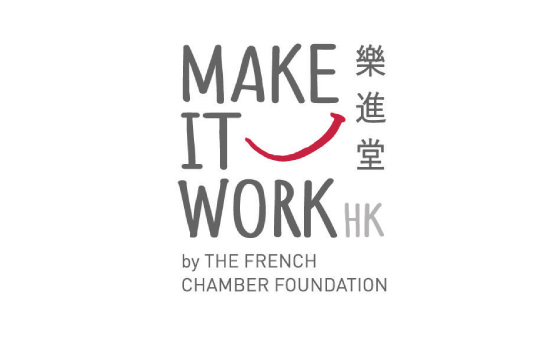
Registered in Hong Kong as a charity, the Foundation empowers low-income workers to improve their livelihoods.

HERMÈS ASIA PACIFIC LIMITED
Hermès Asia Pacific Limited (“HAP”), a subsidiary wholly owned by Hermès International, was established in 1973 in Hong Kong; 2004 in Macau. Currently, HAP manages the business operations of 6 Hermès stores including a Flagship Store in Hong Kong and 4 in Macau as well as future development of Hermès in these 2 Special Administrative Regions.
Since 1837, Hermès has remained faithful to its artisan model and its humanist values. The freedom to create, the spirit of innovation, the constant search for beautiful materials, the transmission of savoir-faire of excellence, and the aesthetic of functionality all forge the singularity of Hermès, a house of objects created to last. An independent, family-owned company which encompasses 16 métiers, Hermès is dedicated to keeping the majority of its production in France through its 54 workshops and production sites and to developing its network more than 300 stores in 45 countries.
HERMÈS ASIA PACIFIC LIMITED 25/F Chinachem Leighton Plaza, 29 Leighton Road, Causeway Bay, Hong Kong Tel : 852 2919 5770
HERMÈS PARFUMS 17/F Chinachem Leighton Plaza, 29 Leighton Road, Causeway Bay, Hong Kong Tel : 852 2919 5770
HERMÈS TRAVEL RETAIL ASIA PTE LTD 26/F Chinachem Leighton Plaza, 29 Leighton Road, Causeway Bay, Hong Kong Tel : 852 2903 0800
Hermès was founded in France in 1837

Industry Clothing / Textile / Garment / Accessories / Leather Watches & Jewellery
Number of Employees 19,700 worldwide
Retail in Asia

Hermès celebrates anniversary with travel retail exclusive

Hermès is marking the 20th anniversary of the first Hermès watch made in the classic ‘H’ shape with a special series of timepieces, to be exclusively distributed through its travel retail network in Asia .
Available in two 26 x 26 mm or 21 x 21 sizes in blue, black or red, the watches feature the iconic Hermès letter H in their design, but with a new varnished dial coated with a translucent lacquer.
Each model features a matching leather strap in Maltese blue calfskin, black Barenia calfskin or H red calfskin – ‘hand-crafted in the company’s ateliers, from selecting the finest hides to the final saddle stitch’, says the brand.
SEE ALSO: Hermès’ new boutique at HKIA
“Intensely Hermès in each and every detail, the new Heure H celebrates 20 years of a time characterised by originality, style and elegance,” adds the brand.
“H. Far more than merely the eighth letter of the alphabet, it is the unmistakable Hermès initial. A letter that soon came to symbolise a Maison that has never lacked inspiration. Initially interpreted on handbags, belt buckles or sandal straps, the Hermès ‘H’ established itself in 1996 as a natural choice for a timepiece design, with the birth of the Heure H watch.”
(Source: TR Business )
Beauty giant L’Oréal said Q1 sales rose 8 percent, posting double-digit growth in all regions except for North Asia.…

Neal Reed named as SVP and MD of P&G Australia and New Zealand

Thriving Brunello Cucinelli sees 16 percent revenue growth in Asia in Q1

Lagardère Travel Retail elevates F&B offerings at Hong Kong Airport with Godiva Café

Levi’s opens largest Bangkok store, enters Bangladesh

‘Pizza everywhere’: South Korea’s GoPizza chain eyes global expansion
20 Apr 2024

18 Apr 2024

15 Apr 2024

11 Apr 2024

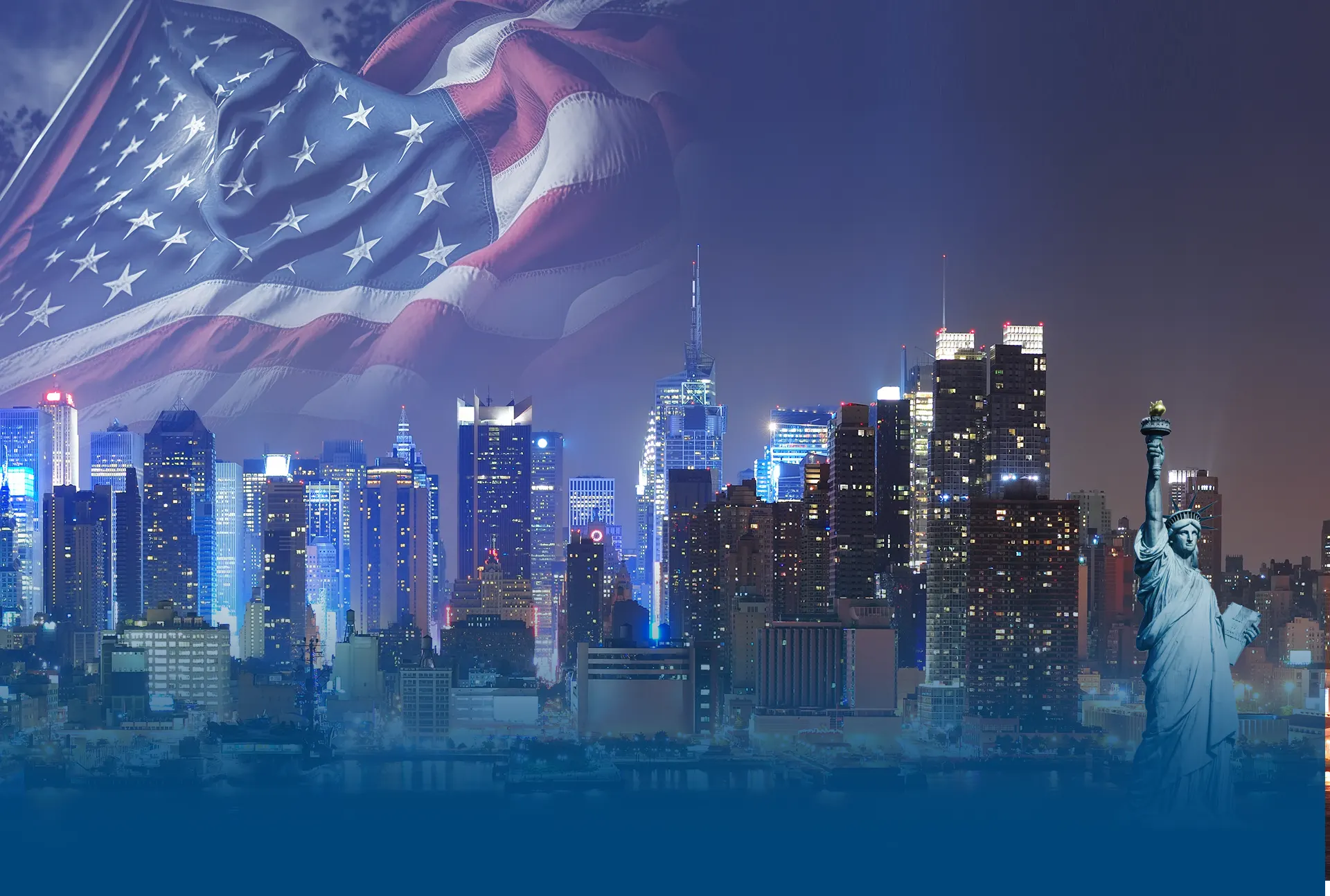
Reaching New Heights With Decades of Progress.

Celebrating 50 years with renewed vision and purpose.
Hermes has embarked on an extraordinary journey, globalizing its brand and proudly inaugurating the first overseas office in the US.
In recent times, our company has been privileged to witness a flourishing partnership between the Indian and American economies. The India-US trade and investment partnership is important not only for the two countries but also for the global economy. India-US trade collaboration stands at an enviable global position!
With immense pride and a deep sense of commitment, we seize this moment to strengthen our presence in the United States at this opportune juncture.

We provide seamless, cost-effective transportation solutions worldwide, ensuring safe and timely delivery through strategic offices and carrier alliances.
- Air & Ocean Consolidation
- US Customs Brokerage Services
- Reefer Drayage at All US Ports
- U.S. Domestic Reefer Trucking Network
- Specialized Projects
- Pharma & Life Science Expertise
- Final Mile/White Glove Service

We go the extra mile.

- Hermes excels in providing reliable temperature-sensitive pharma freight solutions, including customized SOPs and trade lane risk assessments, ensuring timely delivery for healthcare providers and customers.
- We expertly handle both hazardous and non-hazardous chemical logistics, utilizing ocean freight and air freight for efficient transportation while prioritizing safety and environmental compliance.
- At Hermes, we offer customized end-to-end logistics solutions for engineering and automotive companies, catering to both local and multinational businesses, through seasoned global partners and vendors, ensuring reliable delivery.
- Hermes employs top-tier practices for secure, punctual deliveries, featuring commercial contracts, scalable allocations, prioritized carrier space, dedicated perishable handling, speedy customs clearance, and expert documentation.

Search for Cheap Deals on Hotels in Elektrostal
Check last minute elektrostal hotel deals.

Find cheap hotels in Elektrostal
You’re not an average traveler—and Hotwire knows it. Your wanderlust takes you off the beaten path to discover unique adventures and every travel destination’s lesser-known tourist scenes. Hotwire has the hookup! Book your Elektrostal hotel with Hotwire to complete your one-of-a-kind travel checklist.
For you, intrepid voyager, Hotwire has a large selection of the best hotels in Elektrostal.
Choosing the right hotel in Moscow Oblast has everything to do with the way you want your trip to go. If you’ve scribbled a few obscure destinations on your itinerary, you probably already have a good sense of how your getaway is taking shape. Lean into that by booking one of Elektrostal’s hotels. Choose the one that best catches your trip’s tourist drift.
If you’re traveling during the week for business, Hotwire can score you a luxury hotel for as low as . In town for pleasure? Hotwire still has you covered. If you’re in the mood for a quick last-minute weekend getaway or spa retreat, you can get up to 60% Elektrostal hotel deals at the last minute.
While traveling, where you stay plays a major role in your overall vacation enjoyment. Choosing the right hotel is just as important as making sure you book the right flight and car rental. If you’re traveling with family or friends, you may need to book a hotel with connecting rooms. If you enjoy an elegant and relaxing hotel ambiance, opt for one of Hotwire’s luxury hotels in Elektrostal. No matter your reason for visiting Elektrostal, with Hotwire’s large selection of hotels in the area, you’re sure to book a hotel that meets all your accommodation needs.
Frequently Asked Questions About Elektrostal hotels
Where can i find the best last-minute travel deals.
If you’re traveling in the spirit of spontaneity, you’ll love the idea of leaving your exact hotel choice up to chance. With Hotwire Hot Rates, you can save up to 60% off your next flight, hotel, or car rental. Just plug in your general preferences and let Hotwire choose last-minute hotel deals in Elektrostal for as low as .
How many hotels are there in Elektrostal?
With over hotels in Elektrostal, you’re sure to find one that best matches your travel mood. When you book with Hotwire, you can score a stellar home away from home for as low as .
How to find cheap car rentals in Elektrostal?
Finding a cheap car rental deal in Elektrostal is as easy as scoring cheap hotels in Elektrostal. Hotwire partners with top-of-the-line car rental companies to bring you a large selection of affordable options. Whether you’re in need of a large SUV for the entire family or a more compact but stylish vehicle, Hotwire has you covered. You can even save up to 60% off a car rental deal if you book a Hotwire Hot Rate at the last minute.
Is it safe to travel to Elektrostal now?
With recent COVID-19 closures and reopenings, many people are wondering, “Is it safe to travel to Elektrostal right now?” When it’s time to book your getaway, be sure to check out the most up-to-date information on all safety measures, any restrictions, and guidance on traveling during the coronavirus pandemic.
- Near An Airport
- Near An Attraction
- Other Cities Near Elektrostal
- Vnukovo Intl. Airport Hotels
- Sheremetyevo Airport Hotels
- Domodedovo Intl. Airport Hotels
- Zhukovsky Airport Hotels
- Hotels near Electrostal History and Art Museum
- Hotels near Yuri Gagarin Cosmonaut Training Center
- Hotels near Peter the Great Military Academy
- Hotels near Central Museum of the Air Forces at Monino
- Hotels near History of Russian Scarfs and Shawls Museum
- Hotels near Balashikha Arena
- Hotels near Balashikha Museum of History and Local Lore
- Hotels near Bykovo Manor
- Hotels near Pekhorka Park
- Hotels near Malenky Puppet Theater
- Hotels near Military Technical Museum
- Hotels near Church of Our Lady of Kazan
- Hotels near Drama Theatre BOOM
- Hotels near Ramenskii History and Art Museum
- Hotels near Fryazino Centre for Culture and Leisure
- Hotels near Noginsk Museum and Exhibition Center
- Hotels near Shirokov House
- Hotels near Pavlovsky Posad Museum of Art and History
- Hotels near Saturn Stadium
- Hotels near Borisoglebsky Sports Palace
- Northern Europe Hotels
- Eastern Europe Hotels
- Lyubertsy Hotels
- Balashikha Hotels
- Ramenskoye Hotels
- Noginsk Hotels
- Kosherovo Hotels
- Zheleznodorozhny Hotels
- Shchelkovo Hotels
- Zhukovsky Hotels
- Central Russia Hotels
- Fryazevo Hotels
- Istomkino Hotels
- Berezka Hotels
- Afonasovo Pervoye Hotels
- Bol'shoye Bun'kovo Hotels
- Pavlovskiy Posad Hotels
- Bol'shiye Dvory Hotels
- Kolontayevo Hotels
- Zhilino Hotels
More to Explore
- Articles >
The Moscow Metro Museum of Art: 10 Must-See Stations
There are few times one can claim having been on the subway all afternoon and loving it, but the Moscow Metro provides just that opportunity. While many cities boast famous public transport systems—New York’s subway, London’s underground, San Salvador’s chicken buses—few warrant hours of exploration. Moscow is different: Take one ride on the Metro, and you’ll find out that this network of railways can be so much more than point A to B drudgery.
The Metro began operating in 1935 with just thirteen stations, covering less than seven miles, but it has since grown into the world’s third busiest transit system ( Tokyo is first ), spanning about 200 miles and offering over 180 stops along the way. The construction of the Metro began under Joseph Stalin’s command, and being one of the USSR’s most ambitious building projects, the iron-fisted leader instructed designers to create a place full of svet (radiance) and svetloe budushchee (a radiant future), a palace for the people and a tribute to the Mother nation.
Consequently, the Metro is among the most memorable attractions in Moscow. The stations provide a unique collection of public art, comparable to anything the city’s galleries have to offer and providing a sense of the Soviet era, which is absent from the State National History Museum. Even better, touring the Metro delivers palpable, experiential moments, which many of us don’t get standing in front of painting or a case of coins.
Though tours are available , discovering the Moscow Metro on your own provides a much more comprehensive, truer experience, something much less sterile than following a guide. What better place is there to see the “real” Moscow than on mass transit: A few hours will expose you to characters and caricatures you’ll be hard-pressed to find dining near the Bolshoi Theater. You become part of the attraction, hear it in the screech of the train, feel it as hurried commuters brush by: The Metro sucks you beneath the city and churns you into the mix.
With the recommendations of our born-and-bred Muscovite students, my wife Emma and I have just taken a self-guided tour of what some locals consider the top ten stations of the Moscow Metro. What most satisfied me about our Metro tour was the sense of adventure . I loved following our route on the maps of the wagon walls as we circled the city, plotting out the course to the subsequent stops; having the weird sensation of being underground for nearly four hours; and discovering the next cavern of treasures, playing Indiana Jones for the afternoon, piecing together fragments of Russia’s mysterious history. It’s the ultimate interactive museum.
Top Ten Stations (In order of appearance)
Kievskaya station.

Kievskaya Station went public in March of 1937, the rails between it and Park Kultury Station being the first to cross the Moscow River. Kievskaya is full of mosaics depicting aristocratic scenes of Russian life, with great cameo appearances by Lenin, Trotsky, and Stalin. Each work has a Cyrillic title/explanation etched in the marble beneath it; however, if your Russian is rusty, you can just appreciate seeing familiar revolutionary dates like 1905 ( the Russian Revolution ) and 1917 ( the October Revolution ).
Mayakovskaya Station
Mayakovskaya Station ranks in my top three most notable Metro stations. Mayakovskaya just feels right, done Art Deco but no sense of gaudiness or pretention. The arches are adorned with rounded chrome piping and create feeling of being in a jukebox, but the roof’s expansive mosaics of the sky are the real showstopper. Subjects cleverly range from looking up at a high jumper, workers atop a building, spires of Orthodox cathedrals, to nimble aircraft humming by, a fleet of prop planes spelling out CCCP in the bluest of skies.
Novoslobodskaya Station

Novoslobodskaya is the Metro’s unique stained glass station. Each column has its own distinctive panels of colorful glass, most of them with a floral theme, some of them capturing the odd sailor, musician, artist, gardener, or stenographer in action. The glass is framed in Art Deco metalwork, and there is the lovely aspect of discovering panels in the less frequented haunches of the hall (on the trackside, between the incoming staircases). Novosblod is, I’ve been told, the favorite amongst out-of-town visitors.
Komsomolskaya Station
Komsomolskaya Station is one of palatial grandeur. It seems both magnificent and obligatory, like the presidential palace of a colonial city. The yellow ceiling has leafy, white concrete garland and a series of golden military mosaics accenting the tile mosaics of glorified Russian life. Switching lines here, the hallway has an Alice-in-Wonderland feel, impossibly long with decorative tile walls, culminating in a very old station left in a remarkable state of disrepair, offering a really tangible glimpse behind the palace walls.
Dostoevskaya Station

Dostoevskaya is a tribute to the late, great hero of Russian literature . The station at first glance seems bare and unimpressive, a stark marble platform without a whiff of reassembled chips of tile. However, two columns have eerie stone inlay collages of scenes from Dostoevsky’s work, including The Idiot , The Brothers Karamazov , and Crime and Punishment. Then, standing at the center of the platform, the marble creates a kaleidoscope of reflections. At the entrance, there is a large, inlay portrait of the author.
Chkalovskaya Station
Chkalovskaya does space Art Deco style (yet again). Chrome borders all. Passageways with curvy overhangs create the illusion of walking through the belly of a chic, new-age spacecraft. There are two (kos)mosaics, one at each end, with planetary subjects. Transferring here brings you above ground, where some rather elaborate metalwork is on display. By name similarity only, I’d expected Komsolskaya Station to deliver some kosmonaut décor; instead, it was Chkalovskaya that took us up to the space station.
Elektrozavodskaya Station

Elektrozavodskaya is full of marble reliefs of workers, men and women, laboring through the different stages of industry. The superhuman figures are round with muscles, Hollywood fit, and seemingly undeterred by each Herculean task they respectively perform. The station is chocked with brass, from hammer and sickle light fixtures to beautiful, angular framework up the innards of the columns. The station’s art pieces are less clever or extravagant than others, but identifying the different stages of industry is entertaining.
Baumanskaya Statio
Baumanskaya Station is the only stop that wasn’t suggested by the students. Pulling in, the network of statues was just too enticing: Out of half-circle depressions in the platform’s columns, the USSR’s proud and powerful labor force again flaunts its success. Pilots, blacksmiths, politicians, and artists have all congregated, posing amongst more Art Deco framing. At the far end, a massive Soviet flag dons the face of Lenin and banners for ’05, ’17, and ‘45. Standing in front of the flag, you can play with the echoing roof.
Ploshchad Revolutsii Station

Novokuznetskaya Station
Novokuznetskaya Station finishes off this tour, more or less, where it started: beautiful mosaics. This station recalls the skyward-facing pieces from Mayakovskaya (Station #2), only with a little larger pictures in a more cramped, very trafficked area. Due to a line of street lamps in the center of the platform, it has the atmosphere of a bustling market. The more inventive sky scenes include a man on a ladder, women picking fruit, and a tank-dozer being craned in. The station’s also has a handsome black-and-white stone mural.
Here is a map and a brief description of our route:
Start at (1)Kievskaya on the “ring line” (look for the squares at the bottom of the platform signs to help you navigate—the ring line is #5, brown line) and go north to Belorusskaya, make a quick switch to the Dark Green/#2 line, and go south one stop to (2)Mayakovskaya. Backtrack to the ring line—Brown/#5—and continue north, getting off at (3)Novosblodskaya and (4)Komsolskaya. At Komsolskaya Station, transfer to the Red/#1 line, go south for two stops to Chistye Prudy, and get on the Light Green/#10 line going north. Take a look at (5)Dostoevskaya Station on the northern segment of Light Green/#10 line then change directions and head south to (6)Chkalovskaya, which offers a transfer to the Dark Blue/#3 line, going west, away from the city center. Have a look (7)Elektroskaya Station before backtracking into the center of Moscow, stopping off at (8)Baumskaya, getting off the Dark Blue/#3 line at (9)Ploschad Revolyutsii. Change to the Dark Green/#2 line and go south one stop to see (10)Novokuznetskaya Station.
Check out our new Moscow Indie Travel Guide , book a flight to Moscow and read 10 Bars with Views Worth Blowing the Budget For
Jonathon Engels, formerly a patron saint of misadventure, has been stumbling his way across cultural borders since 2005 and is currently volunteering in the mountains outside of Antigua, Guatemala. For more of his work, visit his website and blog .

Photo credits: SergeyRod , all others courtesy of the author and may not be used without permission
- Client log in
Metallurgicheskii Zavod Electrostal AO (Russia)
In 1993 "Elektrostal" was transformed into an open joint stock company. The factory occupies a leading position among the manufacturers of high quality steel. The plant is a producer of high-temperature nickel alloys in a wide variety. It has a unique set of metallurgical equipment: open induction and arc furnaces, furnace steel processing unit, vacuum induction, vacuum- arc furnaces and others. The factory has implemented and certified quality management system ISO 9000, received international certificates for all products. Elektrostal today is a major supplier in Russia starting blanks for the production of blades, discs and rolls for gas turbine engines. Among them are companies in the aerospace industry, defense plants, and energy complex, automotive, mechanical engineering and instrument-making plants.
Headquarters Ulitsa Zheleznodorozhnaya, 1 Elektrostal; Moscow Oblast; Postal Code: 144002
Contact Details: Purchase the Metallurgicheskii Zavod Electrostal AO report to view the information.
Website: http://elsteel.ru
EMIS company profiles are part of a larger information service which combines company, industry and country data and analysis for over 145 emerging markets.
To view more information, Request a demonstration of the EMIS service

IMAGES
COMMENTS
31 July 2015. BoF PROFESSIONAL. LONDON, United Kingdom — Travel retail typically plays second fiddle in brand communications, which emphasise flagship mono-brand stores. But, people travelling account for 40 percent of global spending on personal luxury goods, with 12 to 13 percent captured by the specialised and globally dispersed travel ...
Find. 42 stores foundstore found. Hermès Naples. Store page(new window) Location. 5355-1 Tamiami Trail N., Naples, FL 34108,United States. Phone number. +1 239 299 4370.
The brand's travel bags introduced in 1925 were a global success. In the 1930s, Hermès introduced products that have now entered the annals of fashion as icons - the leather Sac à dépêches (renamed as the "Kelly bag" after Grace Kelly) in 1935 and the Hermès carrés (scarves) in 1937.
Feb 24, 2024, 4:15 AM PST. The Birkin bag. A square silk scarf printed with horse bridles. A cashmere throw blanket splashed with the letter H. For years, Hermès' iconic products have been ...
Florian Craen. Born in 1970, Florian Craen is a graduate of the Paris École Supérieure du Commerce Extérieur and Harvard Business School (AMP). He joined Hermès International in 1997 as European director of Hermès Travel Retail. He was then successively appointed international director of travel retail (2001), managing director of the UK ...
HERMÈS TRAVEL RETAIL ASIA PTE LTD 26/F Chinachem Leighton Plaza, 29 Leighton Road, Causeway Bay, Hong Kong Tel : 852 2903 0800 . Background. Hermès was founded in France in 1837. Industry Clothing / Textile / Garment / Accessories / Leather Watches & Jewellery . Number of Employees
The company noted a 26% increase in wholesale activity, driven by the recovery of travel retail. Sales also grew 23% in group stores, whilst online sales "pursued an upward trend worldwide". Net profit reached £2.9 billion (€3.3 billion), representing net profitability of 29%. Annual recurring operating income increased 40.5% to £4 billion ...
Hermès is marking the 20th anniversary of the first Hermès watch made in the classic 'H' shape with a special series of timepieces, to be exclusively distributed through its travel retail network in Asia.. Available in two 26 x 26 mm or 21 x 21 sizes in blue, black or red, the watches feature the iconic Hermès letter H in their design, but with a new varnished dial coated with a ...
penalised by travel retail. • Asia excluding Japan (+4%) pursued its very favourable dynamic, driven by an excellent third quarter up 29%. It benefitted from the remarkable performance of Mainland China, Korea, Australia and Thailand. The activity in Hong Kong and Singapore improved. Online sales are growing
Wholesale activities growth (+26%) reflected the resumption of travel retail. • Asia excluding Japan (+21%) continued its strong momentum, thanks to an excellent 3rd quarter (+34%). Sales in Greater China picked up strongly, despite temporary closures due to sanitary measures mainly in Macau, Chengdu and Dalian in July and August.
Paris, 21 October 2021. The Group's consolidated revenue amounted to €6,602 million at the end of September 2021, up 57% at constant exchange rates and 54% at current exchange rates compared to the same period in 2020. This increase is of 35% over two years. In the third quarter, the Group's consolidated revenue reached €2,367 million.
Time changes pace. An ode to simplicity, the mechanical Hermès Cut watch asserts a powerful style. Discover its character. Discover all the collections of Hermès, fashion accessories, scarves and ties, belts and ready-to-wear, perfumes, watches and jewelry.
Find company research, competitor information, contact details & financial data for HERMES TRAVEL RETAIL ASIA PTE. LTD. of Singapore. Get the latest business insights from Dun & Bradstreet.
Let your imagination run wild and compose your gift set by selecting four 15 ml travel sprays of your choice. A gift for yourself or for someone else, presented in an orange Hermes box. Compose your gift setYour gift set, $168 , 0 of 4 items selected. Compose your gift set. Compose your gift set, 21 items available.
Ensure excellence of execution of Hermes image. Plan and implement the Visual Merchandising, ordering all POSM and Visuals for all the marketing plan, and feedback back from Field team and Trainer, complete all reporting tools after each shop visit. Manage and motivate the Beauty Consultants and Agency and Retail staff member.
Work with coordinating architects and vendors to ensure each project is executed within time and budget constraints and to Hermès quality standards. Work in close collaboration with the Hermès Travel project team (Project manager based in Paris and the Travel retail executive based in Hong Kong). Ensure and follow up administrative paperwork ...
At Hermes, we offer customized end-to-end logistics solutions for engineering and automotive companies, catering to both local and multinational businesses, through seasoned global partners and vendors, ensuring reliable delivery. We offer flexible, experienced logistics for the dynamic retail and apparel industry, providing tailored supply ...
2022 revenue reached €11.6 billion, up 29% at current exchange rates and 23% at constant exchange rates. Remarkable sales growth in all the geographical areas. Strong increase of wholesale activity (+26% at constant exchange rates) driven by the recovery in travel retail.
Mission Générale. As Sales Delegate, you will be responsible for ensuring the excellence of the Hermes image in the points of sale and in the Hermes Store in Travel Retail. You will support the Beauty Consultants (BCs) by training them and transmitting the Hermes excitement. In addition, you will manage Travel Retail operations.
Elektrostal is a city in Moscow Oblast, Russia, located 58 kilometers east of Moscow. Elektrostal has about 158,000 residents. Mapcarta, the open map.
Looking for hotels in Elektrostal, ? Find the best last minute hotels in Elektrostal, backed by our daily Hot Rate deals. Save up to 60% off Elektrostal hotels!
Have a look (7)Elektroskaya Station before backtracking into the center of Moscow, stopping off at (8)Baumskaya, getting off the Dark Blue/#3 line at (9)Ploschad Revolyutsii. Change to the Dark Green/#2 line and go south one stop to see (10)Novokuznetskaya Station. Check out our new Moscow Indie Travel Guide, book a flight to Moscow and read 10 ...
Main Activities: Iron and Steel Mills and Ferroalloy Manufacturing | Nonferrous Metal (except Copper and Aluminum) Rolling, Drawing, and Extruding. Full name: Metallurgicheskii Zavod Electrostal AO Profile Updated: February 22, 2024. Buy our report for this company USD 29.95 Most recent financial data: 2022 Available in: English & Russian ...